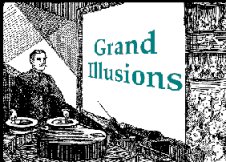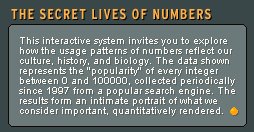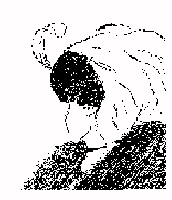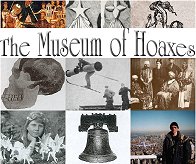SOCIAL FACTORS SHAPING PERCEPTION
AND
DECISION-MAKING
It has been said that man is a rational animal. All
my life I have been searching for evidence which could support this.
--Bertrand
Russell
 It is tempting to assume that perception and reasoning
solely entail physiological and psychological processes. If that be the
case, the appropriate methodology for understanding and predicting another's
behavior would involve entering that person's reality--metaphorically
approaching that individual as an information processing system. This is psychology's imprint
on Americans' understanding of the human condition: if one can understand
how the world is perceived and experienced by another person, then one
can predict that person's behavior. In the movie The
Silence of Lambs a novice FBI investigator employs the worldview
of one serial killer to capture another. In the 1994 jury selection process
for the O.J. Simpson trial, scientific methodology was employed to predict
who would comprise the most sympathetic jury.
It is tempting to assume that perception and reasoning
solely entail physiological and psychological processes. If that be the
case, the appropriate methodology for understanding and predicting another's
behavior would involve entering that person's reality--metaphorically
approaching that individual as an information processing system. This is psychology's imprint
on Americans' understanding of the human condition: if one can understand
how the world is perceived and experienced by another person, then one
can predict that person's behavior. In the movie The
Silence of Lambs a novice FBI investigator employs the worldview
of one serial killer to capture another. In the 1994 jury selection process
for the O.J. Simpson trial, scientific methodology was employed to predict
who would comprise the most sympathetic jury.
Elsewhere we examined several great tensions shaping
the human condition: the role of nature versus
nurture in shaping humans' social fates and the
tensions between the needs of individuals' and the needs of their social
systems. The relative importance of these tensions--and relative potency
of one force versus the other--has produced great divides in social psychological
theories. Another issue generating a major schism involves the workings
of the human psyche, whether individuals' decision-makings are more-or-less
rational (or, perhaps are determined by some universally uniform neural
brain design) or whether they are shaped by uncontrollable sociocultural
(external) or emotional (internal) forces. If the later is the case, if,
for instance, people see what they expect to see and society is the source
of these expectations, or if life is but of a series of freely selected
behavioral choices which, in turn, are socially-shaped action sequences,
then we indeed have the social component of a social
psychology.
Here, the intent is to stress the socio-cultural component
of consciousness and thought. (See Erica Goode's New York Times
article [Aug. 8, 2000] "How
Culture Molds Habits of Thought" and Kurt & Gladys Lang's "Off
the Bandwagon: Some Reflections on the Influence of Perceived Public Opinion.") This is not to deny the roles played  by our hardwiring (e.g., the neural circuitry of our sensory organs and
brain) and personal factors (e.g., personality types, cognitive maturity,
emotional status and social experiences) in shaping perception and decision-making.
But the argument here holds that it is also our social environment that
largely determines what we perceive (and what we ignore) and which channels
the ways in which we cognitively process that information. Shaping perceptions
is, as will be seen, the key to social power. People see what
they expect (and want) to see, and the source of these expectations derive
as much from what they learn from interacting with each other as they do
from direct personal experiences. Culture, for instance, gives us a rank-ordering
of the primacy of sensory data. In American society, for example, the
visual is deemed most important, and we're generally take to be less important
matters of touch (consider the paucity of touch-distinctions in our language).
And given that different groups have differing templates for perception
and thought, the methodological unit for study and comparison are these
groups and their members' socially-shared cognitions. (See Folk
Psychology vs. Mental Stimulation: How Minds Understand Minds for how
"people understand, predict, and explain one another's actions, thoughts,
and motivations.")
by our hardwiring (e.g., the neural circuitry of our sensory organs and
brain) and personal factors (e.g., personality types, cognitive maturity,
emotional status and social experiences) in shaping perception and decision-making.
But the argument here holds that it is also our social environment that
largely determines what we perceive (and what we ignore) and which channels
the ways in which we cognitively process that information. Shaping perceptions
is, as will be seen, the key to social power. People see what
they expect (and want) to see, and the source of these expectations derive
as much from what they learn from interacting with each other as they do
from direct personal experiences. Culture, for instance, gives us a rank-ordering
of the primacy of sensory data. In American society, for example, the
visual is deemed most important, and we're generally take to be less important
matters of touch (consider the paucity of touch-distinctions in our language).
And given that different groups have differing templates for perception
and thought, the methodological unit for study and comparison are these
groups and their members' socially-shared cognitions. (See Folk
Psychology vs. Mental Stimulation: How Minds Understand Minds for how
"people understand, predict, and explain one another's actions, thoughts,
and motivations.")
 The idea that "true" reality is never truly graspable by
humans' sensory and cognitive equipment goes back at least to the works of Plato. There is,
for instance, the distinction between appearances and reality. Show a three-year-old a red ball
beneath a green filter and he will typically say that the ball is black, even though he had
previously been given the ball to examine. Understanding of this appearance-reality distinction
seems so necessary to everyday life that it is hard to imagine a society in which normal people
would not acquire it. But the lesson is relatively new historically, such as the lesson of perspective in
painting, or the intentional designing of optical illusions (such as the Ponzo
illusion), or in the differing testimonies
of eye-witnesses of the same event. The fact is that we all do not perceive the same things
alike.
The idea that "true" reality is never truly graspable by
humans' sensory and cognitive equipment goes back at least to the works of Plato. There is,
for instance, the distinction between appearances and reality. Show a three-year-old a red ball
beneath a green filter and he will typically say that the ball is black, even though he had
previously been given the ball to examine. Understanding of this appearance-reality distinction
seems so necessary to everyday life that it is hard to imagine a society in which normal people
would not acquire it. But the lesson is relatively new historically, such as the lesson of perspective in
painting, or the intentional designing of optical illusions (such as the Ponzo
illusion), or in the differing testimonies
of eye-witnesses of the same event. The fact is that we all do not perceive the same things
alike.
 From gestalt
theory (see also Psych.Com's definition) we
learn of the mind's active role in perceiving wholes that
are greater than the sum of their parts, as in a pointillist
painting. But how do different people come
to agree (or, better, assume that they agree) that they are seeing "pieces
of the same puzzle"? Enter what Eviatar Zerubavel (The Fine Line:
Making Distinctions in Everyday Life, 1991, The Free Press) calls the
"fine lines" whose boundaries give us order and meaningfulness.
As Zerubavel observes, "The very first act of the Creation was one
of dividing. It was through being separated from one another that entities
began to emerge. ...Like most cosmogonies, the biblical story of the Creation
is an allegorical account of the process through which we normally create
order out of chaos. ... [The resulting distinctions] are at the basis of
any orderliness." (p.1) Individuals and social orders can be of two
ideal-type minds: the rigid and the fuzzy. The rigid abhors the ambiguous
and chaotic and cherishes clear distinctions, purity, and order. It is
the mindset characterizing authoritarians and, in its extreme, the closure-seeking
agoraphobics who "dread all forms of open-endedness" (p. 49)
and the sufferers of anorexia and bulimia, who are obsessed "with
maintaining a rigidly bounded self" (p. 51). The fuzzy mind, on the
other hand, feels aversion toward all boundaries, mocks and plays with
conventional (and arbitrary) distinctions, and gravitates toward ambiguities,
novel syntheses, and experiences of communion where one blends in with
one's social surroundings. Its mental fluidity characterizes the worlds
of the very young, mystics (who "renounce the very idea of `classifying
and dissecting,' promoting instead a holistic view of reality whereby everything
flows into everything" (p. 84), and the psychotic. Quests to offset
experiences of separateness and tyranny of order leads the author to explore
sleep, play, humor, and the arts.
From gestalt
theory (see also Psych.Com's definition) we
learn of the mind's active role in perceiving wholes that
are greater than the sum of their parts, as in a pointillist
painting. But how do different people come
to agree (or, better, assume that they agree) that they are seeing "pieces
of the same puzzle"? Enter what Eviatar Zerubavel (The Fine Line:
Making Distinctions in Everyday Life, 1991, The Free Press) calls the
"fine lines" whose boundaries give us order and meaningfulness.
As Zerubavel observes, "The very first act of the Creation was one
of dividing. It was through being separated from one another that entities
began to emerge. ...Like most cosmogonies, the biblical story of the Creation
is an allegorical account of the process through which we normally create
order out of chaos. ... [The resulting distinctions] are at the basis of
any orderliness." (p.1) Individuals and social orders can be of two
ideal-type minds: the rigid and the fuzzy. The rigid abhors the ambiguous
and chaotic and cherishes clear distinctions, purity, and order. It is
the mindset characterizing authoritarians and, in its extreme, the closure-seeking
agoraphobics who "dread all forms of open-endedness" (p. 49)
and the sufferers of anorexia and bulimia, who are obsessed "with
maintaining a rigidly bounded self" (p. 51). The fuzzy mind, on the
other hand, feels aversion toward all boundaries, mocks and plays with
conventional (and arbitrary) distinctions, and gravitates toward ambiguities,
novel syntheses, and experiences of communion where one blends in with
one's social surroundings. Its mental fluidity characterizes the worlds
of the very young, mystics (who "renounce the very idea of `classifying
and dissecting,' promoting instead a holistic view of reality whereby everything
flows into everything" (p. 84), and the psychotic. Quests to offset
experiences of separateness and tyranny of order leads the author to explore
sleep, play, humor, and the arts.
These fine lines carry both cognitive and cultural
weight and have a moral dimension as well. Seeking to eliminate barriers
between individuals, the fluid mind is attracted to Marxism, cosmopolitanism,
and universalism. Detesting the categorically impure and liminal, the rigid
mind, objects to miscegenation, homosexuality, drugs, and melting pots.
Further, social lenses amplify the cognitive tendencies to either create
or blur the gaps between mental entities carved out of social reality.
A cultural predominance of one mind over another is reflected in architecture,
art, intermarriages, food (the eclectic cuisines of the fuzzies and the
segregated steak and potatoes of the rigids), games and puzzles (the rigids being
exceptionally good at "Find the Faces in the Tree"), gender distinctions (e.g., the
fluid fuzzies more likely being androgynous), and privacy needs.
But what are the cultural and sociological implications
of a society predominately comprised of fluid- or rigid-minded personality
types? Consider, for instance, John
Leo's "A no-fault Holocaust", wherein it is argued that
"multiculturalism"
has led to moral relativism and nonjudgmentalism in American schools. To
explore this issue, let's consider the correlates of the following variable
from the 1988 NORC General Social Survey, where individuals were asked
whether they agree or disagree with the statement:
Right and wrong are not usually a matter of black and
white. There are many shades of gray (NORC variable
BLKWHITE).
We find that 41% of Americans agreed strongly with
this statement, 44 agreed somewhat, and the remaining 15% disagreed either
somewhat or strongly. This certainly can be taken as evidence of the moral
ambiguities of our time, as well as the possible consequences of cultural
urbanization, secularization, and individualism (indeed, nearly three-quarters
of Americans agreed with the statement "Morality is a personal matter
and society should not force everyone to follow one standard.") Among
the correlates of variable BLKWHITE:
- those with four or more years of college are more
than 20 percentage points more likely to agree than those with no more
education than a high school diploma;
- those strongly religious are more than twice as likely
to disagree (25%) than those less religious (11%) and more than four times
as likely than those with no religious affiliation (5%);
- Fundamentalist Protestants are more likely (23%) to
disagree than are moderate Protestants (14%), liberal Protestants (13%),
and Catholics (11%);
- those who place themselves on the conservative end
of the political spectrum are more than twice as likely (24%) as liberals
(11%) and moderates (10%) to disagree with the statement;
- those agreeing that "women should take care of
running their homes and leave running the country up to men" are more
than twice as likely to disagree than are those disagreeing that women
should stay home;
- those disapproving of the legalization of euthanasia
are nearly three times more likely to disagree "there are many shades
of grays" than are those approving of euthanasia;
- and those disapproving of a woman's right to an abortion
"for whatever reason" are nearly three times as likely to disagree
than those approving of a woman's right to choose.
In sum, rigid and fuzzy mindedness underlie group
memberships
and individuals' positions toward some of the moral issues of our
times.
THE SOCIAL CONSTRUCTION OF THE BOUNDARIES OF
PERCEPTION
These fine lines which allow the perception of entities and
categories (and thereby giving order and meaning to the chaotic experiences of everyday life)
are largely social in origin. They create the boundaries between what's mine and yours,
between "us" and "them," what's sacred and profane, and what's "real" and "unreal." One
avenue of potential research can focus on the social construction of such lines of discrimination.
Consider the social construction of sensory distinctions.
For instance, take the case of the bottled-water industry. Observed Trish Hall:
Manufacturers are doing everything they can to convince drinkers that the
distinctions among substances formerly considered uniform are worth noting--and paying for.
...[One] company is trying to teach waiters the differences among waters, just as vintners have
had to illustrate the distinctions between chardonnay and Riesling ("You Had the Coffee and
Water? That'll Be $19.95." New York Times, Feb. 24, 1993).
Here we get into the power of those who can train a population's perceptual frameworks, the
contrast masters who produce major distinctions among previously uniform
essences. In marketing, for instance, there is "positioning"--the attempts to differentiate one's
own product from all related others. Once such boundaries are in place and categories made,
there is the tendency of individuals to see greater similarity between things within the same
category than may, in fact, be the case, and to likewise see greater differences between items in
different categories. Thus, as Zerubavel notes in the case of animal classifications, we see
greater similarity between a Great Dane and a Pekinese than between a Great Dane and a
pony.
Case studies in the creation of cognitive boundaries, in the
social construction of conceptions of sameness and difference, could include:
- the boundaries of We vs. They. In The Origins of
Satan, Elaine Pagels writes "It has always been the case that those closest to us, our
ideological and cultural brethren, are hated and feared the most. (Freud called this "the
narcissism of little differences," ...[p.30]) Consider the matter of ascertaining ethnic
differences. Unlike race, which involves matters of shared genes, ethnicity entails matters of
shared history, perceptions, and group identity. Is it not interesting how often the greatest
conflict occurs among people of the same stock--such as Irish Catholics vs. Protestants, Serbs
vs. Croats, Indian Hindis vs. Muslims, or Rwandan Hutus vs. Tutsis? Ethnic lines get drawn
when people perceive that they share common cultural identities and a common threat. As
conflicts evolve, participants become increasingly aware of their cultural markers.
- the boundaries between the sacred and the profane.
- the boundaries between private and public selves. In early
1998, when the news teemed with stories of President Clinton's supposed affair with a 21-year-
old White House intern, the President's approval ratings reached their all-time high--even
though a majority of Americans believed him to be lying about his philandering activities.
Why? Certainly women represented a major source of his political support. And women
were not about to abandon the President's pro-female political agenda. Their emerging
ideology: private lives should not be basis of judging one's public performances. If
Hillary
can tolerate her husband's private behaviors then why cannot we? Further, are we to extend
this moral witchhunt to deceased Presidents as well--the Jeffersons, FDRs, LBJs, and
Eisenhowers?
- the boundaries between "active" and "passive"
euthanasia.
THE INDIVIDUAL AS SOCIAL
SCIENTIST
When we observe nature we see what we want to see,
according to what we believe we know about it at the time. Nature is disordered, powerful and
chaotic, and through fear of the chaos we impose system on it. We abhor complexity, and seek
to simplify things whenever we can be whatever means we have at
hand
--James Burke, The Day the Universe
Changed, p. 11
Envision a theoretical model where we take all social actors
being, in effect, social theorists. Indeed, when you think about it, much of our
everyday chatter deals with our theories and their predictiveness: "I
told you that you would find that difficult course;" "Didn't
you think she would know better than to date him?" Each of us has
our personal operating theories about types of people, types of settings,
and types of events. These cognitive schemas link otherwise diverse phenomena; our ideas do
shape our experiences. And to the extent that individuals' personal theories are similar their
behavior should be similar as well.
The practice of science of these everyday social scientists,
however, is bad. For instance, give yourself thirty seconds to count the
number of "F's" in this passage. How
many did you find? Most of my colleagues counted three but my six- year-old
found six. What does this mean to you given what we've said?
A great deal of what is perceived is, in actuality,
inferred. Instead of using data from our social world to modify and improve
our everyday theories of social life, we only seek or remember that which
supports our world views as we often go through life "on
automatic." In addition to seeing the world through our concepts and language,
our perceptions are also biased by:
- first and last
impressions.
Why
are your first impressions in the mind of your employer important?
Because they create a self-model in his/her mind that you wish to
be in your favor. If, for instance, you initially came across as being
a well- groomed and organized individual, appearing at work disheveled
one day would more likely lead to your boss to think that you've simply
had a bad day as opposed to really being a slob.
- the contrast effect. If we are presented with
two things, one after the other, and the second item is somewhat different
from the first, we tend to perceive them being more different than they
it really are.
- having one's self-esteem at stake, which leads
to greater attention being directed to oneself as opposed to one's external
world;
- personal needs, for instance
Jerome Bruner's study showing how when children were asked to estimate
the size of coins that poor children tended to exaggerate their size while
well-to-do children did not.
- ego-enhancing biases and illusions of control,
in which people reinterpret events so as to put themselves in a favorable
light: "If I hadn't been there, there's no way the sorority would
have been ready for Parents' Weekend."
- and false consensus biases, whereby
individuals regard their own attitudes and behaviors as normal and
customary.
- the belief of many that theirs is a just world,
that good people are ultimately rewarded and bad people ultimately punished for their
behaviors.
For an incredible inventory of cognitive biases, see
Wikipedia's
impressive listings and The Fallacy Files
Weblog.
THE COGNITIVE SELF
- Protosociology: An International Journal of Interdisciplinary research with special issues on
Philosophy of Mind; Folk Psychology, Mental Concepts and the Ascription of Attitudes;
Rationality; and Structural Evolution
- Richards J. Heuer, Jr.'s Psychology of Intelligence Analysis, from the CIA's Center for Study of Intelligence, replete with such topics as how individuals process incomplete and ambiguous information
- The Zaltman Metaphor Elicitation Technique--"Because approximately 95% of all thought occurs in the unconscious, most of
these factors are missed by traditional research methods."
- Perceptual
Control Theory
- Attribution
Theory
- Resources
for Psychology and Cognitive Sciences
- Electronic archives of CogPrints, a
multidisciplinary journal on cognition
- Social
Cognition - Social Psychology Paper Archive
- Cogprints a cognitive sciences eprint archive (UK)
- The Jean Piaget Archives
- David
Chalmer's "Contemporary Philosophy of Mind: An Annotated
Bibliography"
MEMORY
Another test (and no cheating). How truly observant
are we in everyday life and what do we really remember? To what degree
to we operate on "automatic"? Which one
of these pennies has the correct design? Did you get it right? Most
have trouble with this exercise. What does this mean?
- APA's "Questions and Answers about
Memories of Childhood Abuse"
- Memory from the Exploratorium: The Museum
of Science, Art and Human Perception
- False
Rape, Abuse and Molest Reports - Index
- False
Memory Syndrome Foundation (FMSF) home page

BELIEF SYSTEMS: FROM
STEREOTYPES TO IDEOLOGIES
A great many people think they are thinking when they
are merely rearranging their prejudices.
--William James
(1842-1910)
For those who do not think, it is best at least to
rearrange their prejudices once in a while.
--Luther Burbank
(1849-1926)
The personal theories that individuals carry in their
minds range from the single- trait models (give me some feature of another
person, such as their weight or generation, and I'll tell you everything
that you want to know about that person--hence studies of court decisions
showing that defendants judged to be unattractive being more likely to
be judged guilty and to receive prison sentence than attractive ones) to
full-blown ideologies that give order to and link wide-ranging political,
economic, religious, and cultural phenomena. These include attitudes,
which are collectively shared predispositions, states of anticipation,
and relatively enduring organizations of affect, and stereotypes, which
are those attitudes we hold to about categories of people. The connection between
personal attitudes and behavior is, however, far from
direct. See Andreas
Schneider's analysis of LaPiere's 1934 field experiment.
Why is
prejudice so hard to break? Because many stereotypes seem to be helpful
in organizing our perceptions of the world, and that people tend to seek
and remember those situations that reinforcing their stereotypes while
avoiding those that do not.
BELIEFS CONCERNING ONE'S SELF
BELIEFS IN EXTERNAL VS. INTERNAL LOCUS OF
CONTROL
Entering our cognitive calculus for understanding why
certain people do certain things is the matter of their perceived choice
in acting as they do. With high personal choice and freedom to act, people
cannot easily deny them or avoid feeling responsibility for their behaviors.
When inferring dispositions from others' behaviors, when individuals are
perceived to have low exogenous pressures to act in a certain way, personally
relevant and motivating behavior understood to be correlated with the explicitness
of their behavior: "Why did Tommy throw that tantrum in class? He's
an unruly child. He's that way in every class." However, what if all
of the children were throwing tantrums in the classroom? Or what if Tommy's
tantrums were confined only to one class?
Is it not interesting how many people choose to believe
that their fate is shaped not by free will but rather by external agencies,
such as beliefs
in astrology? A 1993 NORC random survey of American adults found some
10 percent saying "definitely true" and another 42 percent saying
that it was "probably true" that astrology has some scientific
truth. Click here to see Americans beliefs in astrology
by age and education.
COUNTERING HATE AND STEREOTYPES
In The Nature of Prejudice, Gordon Allport
argues
that prejudices are often based on one's in-group. He believes that individuals
have a natural tendency to form prejudices due to their normal tendencies
to form simplified concepts and generalizations. Prejudices come in two
flavors: love-prejudice (over-generalizing the virtues of one's in-group)
and hate-prejudice (over-generalizing the evil of out-groups). Love-prejudice
comes first; one must have family and friendship bonds before one can define
out-groups or enemies. Those who reject one out-group are highly likely
to reject other out-groups as well.
Allport suggests that we act upon our prejudice by
first talking about our prejudices. Next we separate ourselves from the
outgroup. Then we discriminate against the outgroup. Then the outgroup
is physically attacked. Finally, the outgroup must be eliminated, which
is the highest level of prejudiced action.
- Yahoo
- Society and Culture:Race Relations:Anti-Racist Action
- Museum of
Tolerance
- The
Anti-Racism Resources Home Pages
CONSPIRACY THEORIES
 It is for these reasons that conspiracy theories are
so prevalent and potent. In our attempts to explain extreme disjunctures
between outcome and intent, to make sense of a world in which no one has
much control, one of the easiest--and perhaps most natural-- logics for
accounting for such events as wars, depressions, civil unrest, and perhaps
even the "greenhouse effect" is to place the blame on the evil
intentions of some coterie of powerful individuals or interests. Even UFO-flying
aliens become fair game.
It is for these reasons that conspiracy theories are
so prevalent and potent. In our attempts to explain extreme disjunctures
between outcome and intent, to make sense of a world in which no one has
much control, one of the easiest--and perhaps most natural-- logics for
accounting for such events as wars, depressions, civil unrest, and perhaps
even the "greenhouse effect" is to place the blame on the evil
intentions of some coterie of powerful individuals or interests. Even UFO-flying
aliens become fair game.
- Yahoo!
- Government:Politics:Political Opinion:Conspiracy
- AboveTopSecret.com "with the ultimate purpose of exposing the secrecy
that exists within the government and military organisations of the world"

- True Conspiracies, the Illuminati and One World Government
- U.S. Corporations' complicities with the Nazis
- Gonzo
links
- Black-
Ops: An Encyclopedia of Conspiracy Theories
- Free
America
- Free
Speech
Newspaper
- THE ORIGINAL
Fascist New World Order Page
- CORRUPTION
IN AMERICA
- Point
Communications Corp.: Conspiracies & Hoaxes
- Oklahoma
Bomb Conspiracy Page
- The
Bermuda Triangle
- Area
51/Groom Lake
- Hugh's
HAARP Info Page

 Return
to Social Psychology Index
Return
to Social Psychology Index
 It is tempting to assume that perception and reasoning
solely entail physiological and psychological processes. If that be the
case, the appropriate methodology for understanding and predicting another's
behavior would involve entering that person's reality--metaphorically
approaching that individual as an information processing system. This is psychology's imprint
on Americans' understanding of the human condition: if one can understand
how the world is perceived and experienced by another person, then one
can predict that person's behavior. In the movie The
Silence of Lambs a novice FBI investigator employs the worldview
of one serial killer to capture another. In the 1994 jury selection process
for the O.J. Simpson trial, scientific methodology was employed to predict
who would comprise the most sympathetic jury.
It is tempting to assume that perception and reasoning
solely entail physiological and psychological processes. If that be the
case, the appropriate methodology for understanding and predicting another's
behavior would involve entering that person's reality--metaphorically
approaching that individual as an information processing system. This is psychology's imprint
on Americans' understanding of the human condition: if one can understand
how the world is perceived and experienced by another person, then one
can predict that person's behavior. In the movie The
Silence of Lambs a novice FBI investigator employs the worldview
of one serial killer to capture another. In the 1994 jury selection process
for the O.J. Simpson trial, scientific methodology was employed to predict
who would comprise the most sympathetic jury. 

 From
From 

